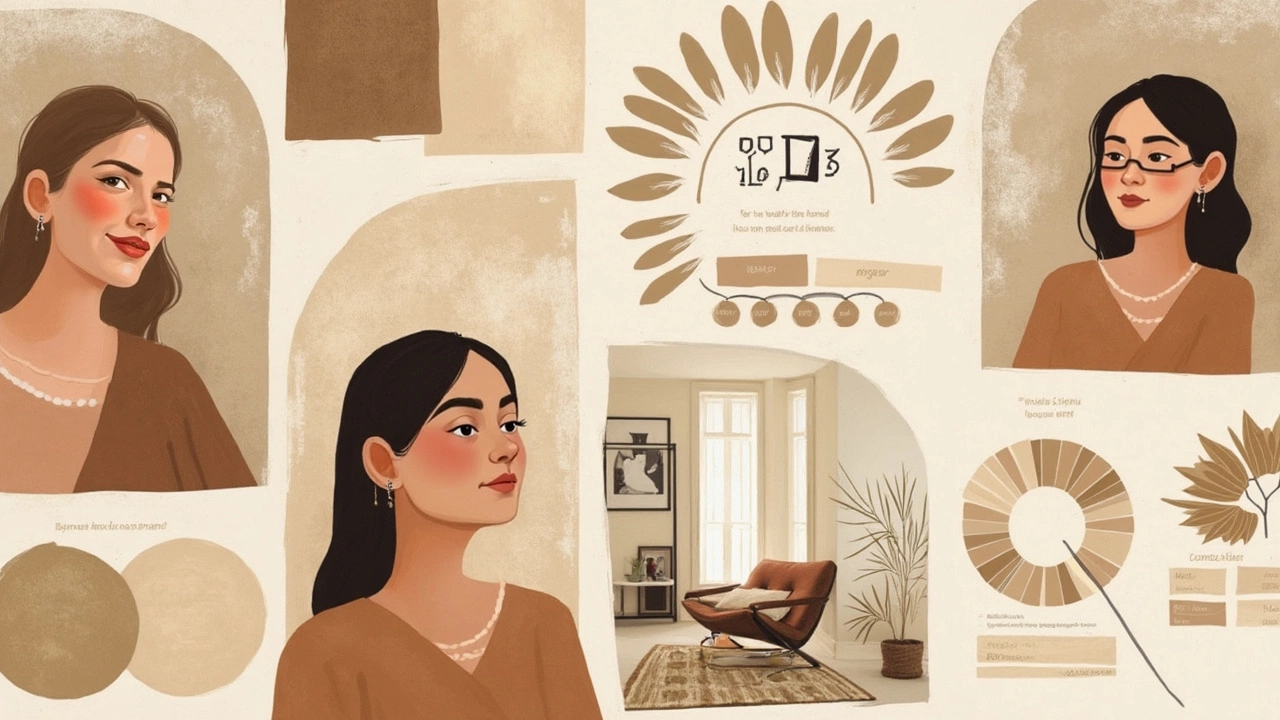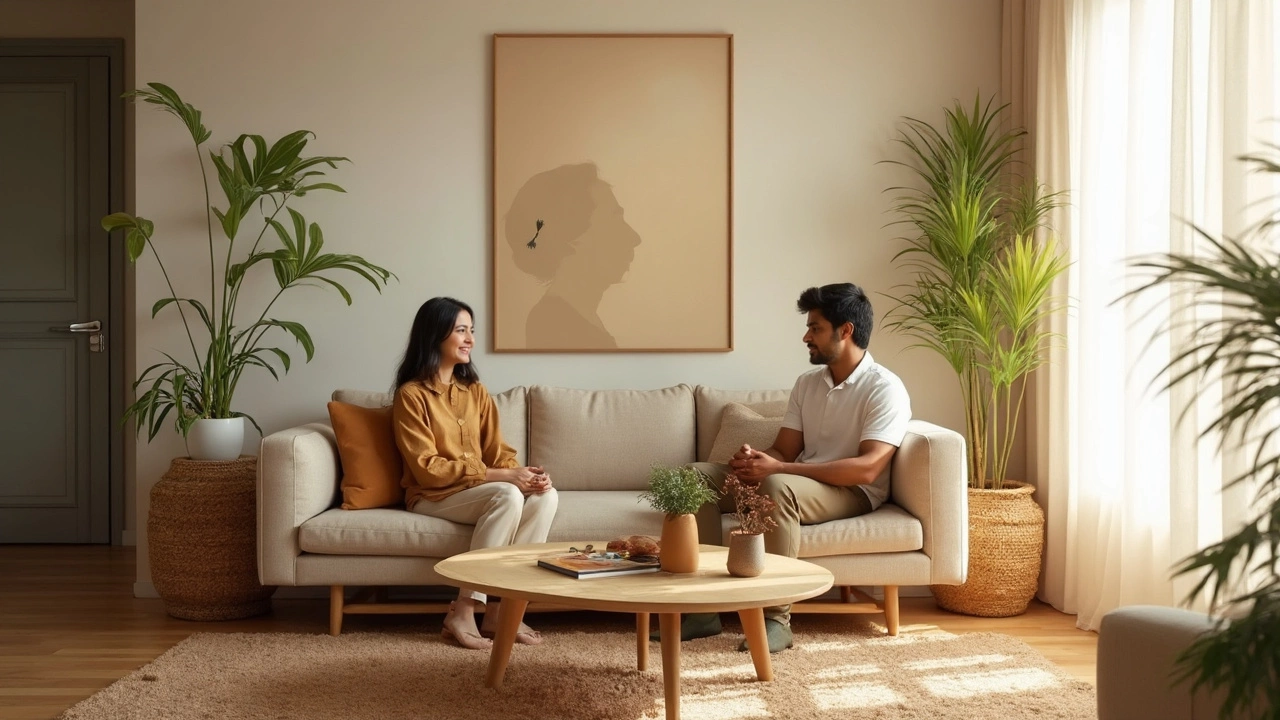Three years ago, if you’d asked me the official color of an Ikea-browsing millennial, I probably would have said forest green or blush pink. Yet here we are in 2025, wandering through Melbourne’s hip suburbs, and beige has conquered everything from coffee mugs to entire living rooms. How did a color once mocked as 'safe' or 'boring' end up on every Instagram feed, in ultra-chic cafes, and even in the wardrobes of trendsetters? The rise of beige isn’t just about taste; it’s a roadmap of how young adults want to live, work, and feel in a world that’s anything but calm.
The Beige Boom: Why This Shade Captivates Millennials
When you first walk into a millennial’s home, you’ll probably see a palette of whites, creams, sand colors, and just about every shade of beige you can imagine. Beige has even infiltrated tech launch events, where gadgets used to boast shiny blacks and metallics. Why? Millennials live in a visually crowded era. Their digital lives are full of noisy, bright distractions. Walking into a beige-filled space feels like stepping into a breath of fresh air after scrolling through a cluttered phone. Beige offers relief, stability, and that much-needed sense of pause.
What’s funny is that beige isn’t even a single color—it’s a spectrum that pulls in taupe, oatmeal, camel, and wheat. This flexibility is part of its charm. Unlike bold colors that grab attention, beige slips politely into the background, making it perfect for a generation that values both style and subtlety.
The numbers paint an even clearer picture. According to a 2024 Houzz report, searches for ‘beige living room’ designs shot up by 78% compared to 2020. On Instagram, the hashtag #beigeaesthetic sailed past 3 million posts this year alone. Millennials have essentially turned beige into the color of aspiration and adulthood—a new symbol of quiet luxury.
But it’s not all about looking grown-up. Beige works like a blank canvas. If you change your couch pillows for seasonal color pops (hello, mustard-yellow for winter or pastel for spring), the space never looks dated. That adaptability means you don’t have to fear buyer’s remorse—a lesson Fiona drilled into me after we spent a month deciding on a living room rug. In short: beige is safe, but never boring if you know how to play with it.
Beige in the Brain: The Psychology and Science of the Trend
Let’s talk science. Why does beige feel so reassuring? Psychologists say neutral colors like beige actually help reduce anxiety and can trigger feelings of calm. There’s plenty of data to back this up. A 2023 study from the University of Sydney found that participants in rooms painted beige, cream, or soft taupe displayed lower heart rates and reported less stress compared to those in rooms with bold colors like red or cobalt blue. In the post-pandemic world, where millions spent months confined at home, it’s no wonder millennials craved a soothing, neutral haven.
There’s a deeper cultural layer too. Growing up through the 2008 financial crisis, millennials came to value practicality and flexibility. Beige furniture or walls don’t need to be replaced or painted with each passing trend. That saves not just money, but time and stress—a big reason why so many lean towards “timeless” looks rather than fleeting fads.
But the beige obsession isn’t just practical—it’s clever. Neutral tones play well on camera, and millennials are never far from their phones. Want a living room that doubles as a beautiful background for Zoom calls, TikToks, or an impromptu latte art competition with friends? Beige is your friend. It bounces light naturally, flatters most skin tones, and never upstages the main event: you or whatever you’re showing off.
| Search Term (2024) | Increase Since 2020 |
|---|---|
| #beigeaesthetic (Instagram) | +2.6 million posts |
| Beige Living Room (Houzz) | +78% |
| Beige Home Decor (Pinterest) | +92% |
| Beige Outfits (Google Trends) | +54% |
And here’s an insider tip: beige can even help you sleep better. According to the Australian Sleep Foundation, muted hues like beige signal your brain that it’s time to wind down, unlike glaring reds or neon blues. That’s probably why we switched our bedroom palette to sandy shades last year—nightmares are down, sleep scores are up, and Fiona hasn’t looked back.

How Beige Took Over Social Media, Retail, and Pop Culture
Pop open your favorite app and scroll for three minutes—you’ll see that beige is everywhere. It’s not just a favorite of interior design bloggers; fashion giants like Uniqlo and Zara have based entire collections around creamy, neutral palettes. Even phones and laptops now come in “moon white” or “champagne gold”: fancy names for beige. This shift isn’t an accident. Retailers obsess over what looks good online because… that’s where millennials (and Gen Z right behind them) make snap decisions. Beige pops on a feed full of chaos.
Part of beige’s power comes from its compatibility. It fits with almost every style—Scandinavian minimalism, boho vibes, Japanese wabi-sabi. Just look at the top Australian homeware startups. Most of their featured homes look calm but ultra-inviting, dotted with plush beige sofas and creamy curtains. Even airbnbs aiming for “calm and inviting” get better ratings and higher bookings when their main photos feature neutral palettes, according to 2023 property data from Stayz Australia. Beige, it turns out, is good business.
Celebrity culture is in on the action too. Remember Kim Kardashian’s infamous beige mansion tour? That single video racked up millions of views in hours, unleashing countless ‘beige home’ TikToks. Soon, the color climbed the charts across home decor sites everywhere. Here in Melbourne, interior tours from local bloggers almost always lead with sunlit shots of clean, uncluttered beige corners—often with an artfully placed basket or a sleek, unbranded candle.
But the beige craze isn’t all top-down. Millennials have become master curators. They’re tired of being told what to like and choose beige for its safety, yes—but also because it gives them freedom. With beige as the base, you can layer on art, throws, or crazy plants. If tastes change (which they do, a lot), there’s no need to eBay the furniture: just swap in a new rug or some vintage posters. It’s the ultimate background for personal expression.
Here’s a data nugget: according to a 2025 Pinterest trends report, beige-based boards saw a 60% increase in saves and shares from users aged 27-39. Retailers want it, influencers showcase it, and regular folks can make it their own. The secret sauce? Beige is never just one thing to anyone. It’s aspirational, but feels accessible—just how millennials like it.
Tips to Master the Beige Look Without Going Bland
Ready to try beige at home but afraid you’ll end up with a dentist’s waiting room vibe? No worries. Done right, beige is dynamic and rich, not stale. The trick is to mix it up: layer different shades, textures, and even a dash of color if you’re feeling bold. I learned this the hard way after an all-beige kitchen experiment that Fiona vetoed after just one week of 'it looks like gravy'.
- Start small. Try beige accessories—throws, vases, cushion covers. See how they feel in your space before you commit to bigger changes.
- Mix shades. Pair sandy beige with deeper caramel or pale almond. Monotone doesn’t have to mean monotonous.
- Bring in texture. Think chunky knit blankets, jute rugs, raw ceramics, or linen curtains. Texture adds warmth and keeps things interesting.
- Add a pop of life. Plants with deep green leaves look fantastic next to beige walls or furniture. They bring contrast without clashing.
- Go metallic with details. Brass, gold, or even matte black drawer pulls and lamp stands give a subtle edge to cozy neutrals.
- Art matters. Abstract canvases, black-and-white photography, or mood board frames turn beige walls from “meh” to “modern gallery.”
Remember, the idea isn’t to erase color, but to make beige your anchor. This way, if inspiration strikes or the seasons change, you can refresh your look with a quick swap, not a remodel. Beige is like that reliable friend: always steady and there for you, but never stealing the spotlight. And if you ever get stuck, borrow from what you see in local Melbournian cafes or your favorite design Instagram—millennials have made beige not just cool, but endlessly customizable.
In the end, what really makes beige the millennial interiors secret weapon? It’s about control, comfort, and making home a sanctuary from the colorful chaos outside. When your life is full of uncertainty, beige is the one thing you can shape to suit you—timeless, flexible, and maybe just a bit underrated.

